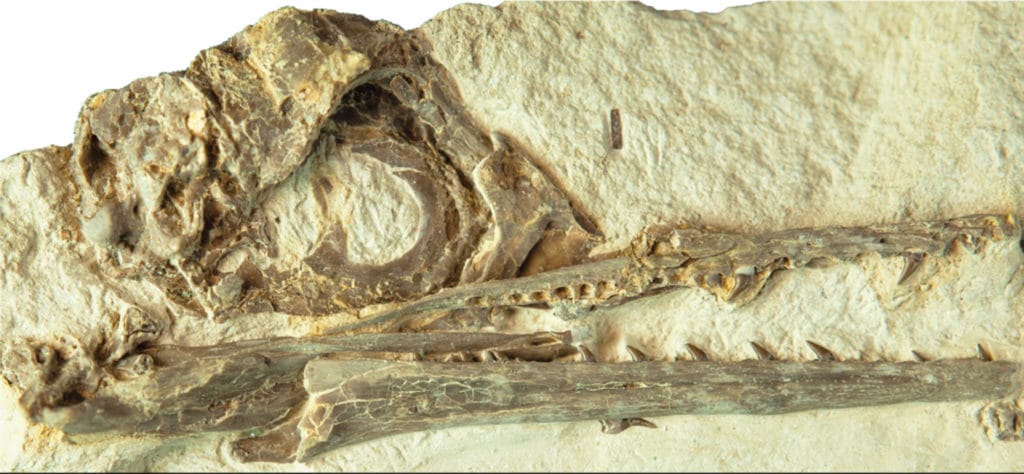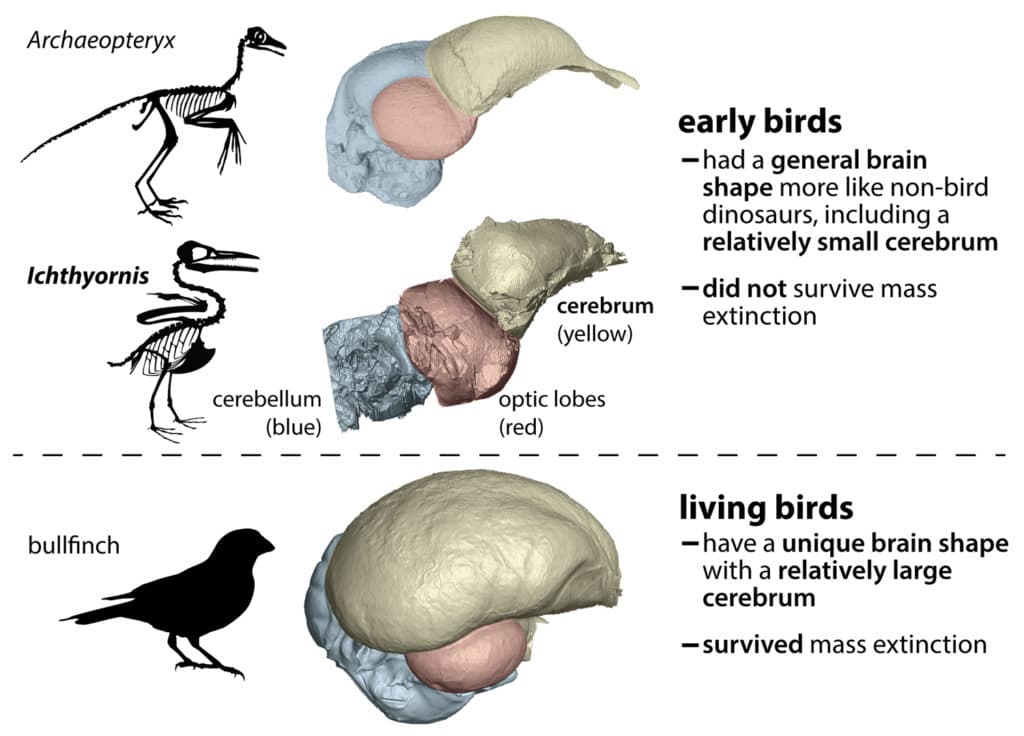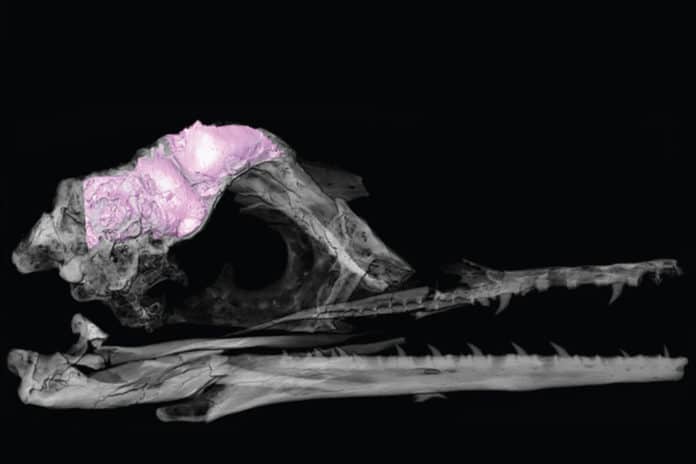Unlike any known animals except mammals, living birds have more complex brains. Due to their unique brain shape, the ancestors of living birds survived the mass extinction of Nonavian dinosaurs, suggests a new study.
The study by scientists from the University of Texas at Austin studied a 70-million years old fossil of a bird named Ichthyornis. Ichthyornis has a combination of avian and nonavian dinosaur-like characteristics. Their jaws were full of teeth but tipped with a beak.
The nearly complete skull of the bird let scientists study the brain of the Bird and test the idea that those brains played a significant role in their survival.

With CT-imaging data, scientists used the skull of Ichthyornis like a mold to create a 3D replica of its brain called an endocast. Scientists then compared their endocast with ones created for living birds and more distant dinosaurian relatives.
The outcomes showed that the brain of Ichthyornis had similarities to nonavian dinosaurs than living birds. Living birds are specifically found to have much bigger cerebral hemispheres than in Ichthyornis. That pattern suggests that these functions could be connected to surviving the mass extinction.

Lead investigator Christopher Torres, who conducted the research while earning a Ph.D. from the UT College of Natural Sciences, said, “If a feature of the brain affected survivorship, we would expect it to be present in the survivors but absent in the casualties, like Ichthyornis. That’s exactly what we see here.”
Julia Clarke, a professor at the UT Jackson School of Geosciences and co-author of the study, said, “This fossil helps bring us much closer to answering some persistent questions concerning living birds and their survivorship among dinosaurs.”
Mark Norell, the curator and division chair of paleontology at the American Museum of Natural History, co-authored the study. This work was funded by the Howard Hughes Medical Institute Science Education Program, the Jackson School of Geosciences, and the American Museum of Natural History.
Journal Reference:
- Christopher R. Torres et al. Bird neurocranial and body mass evolution across the end-Cretaceous mass extinction: The avian brain shape left other dinosaurs behind. DOI: 10.1126/sciadv.abg7099
